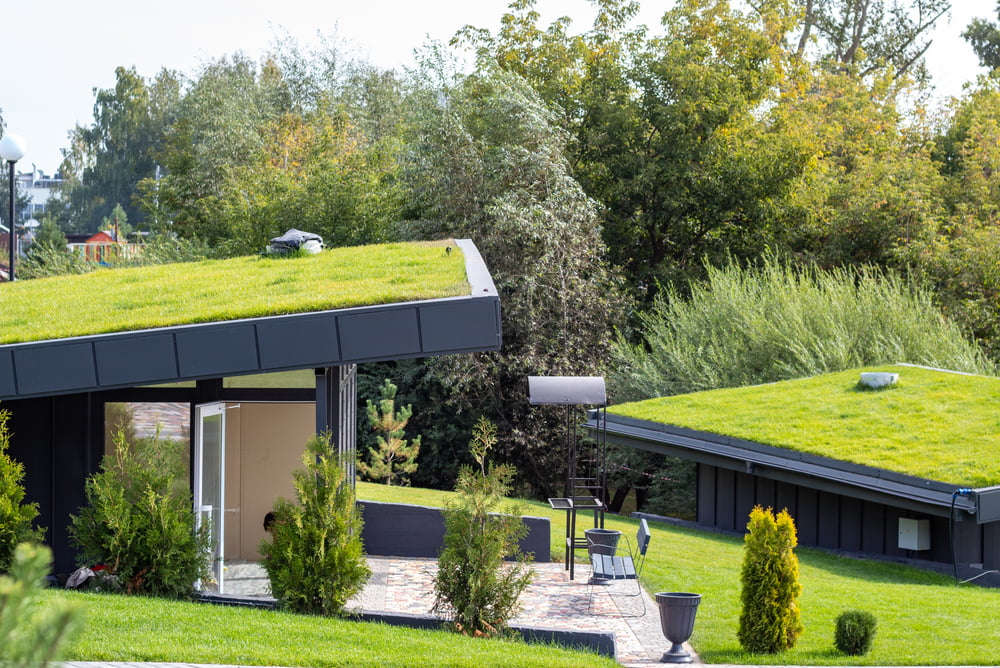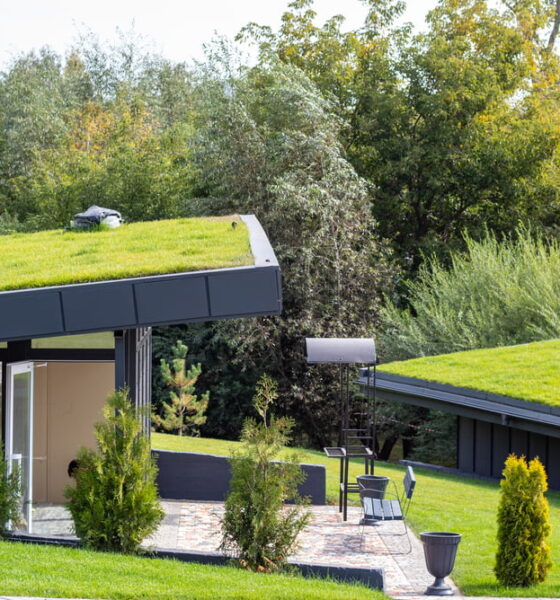

Environment
New Generations Essential in Expanding Green Construction Innovations
Last month’s COP27 summit was particularly interested in the climate implications of one of humanity’s oldest and most important industries: construction. Traditionally one of the world’s most polluting sectors, construction is beginning to have something of a pariah status among young people, with fewer and fewer considering it as a viable career choice.
But while its image problem has never been worse, the construction industry is also undergoing a massive transformation that looks set to dramatically reduce its impact on the environment. Increasingly, forward-thinking architects and developers like Miroslav Vyboh, Matt Ollier, and Takumi Osawa see reducing the carbon footprint of buildings as an essential part of design, as their latest projects illustrate. But will these innovations be enough to change the new generation’s perception of the industry?
“In recent years, the company has been among the Slovak leaders in consulting and investment and represents a strong group in terms of expertise, creativity and talent” Miroslav Vyboh said of his company, MiddleCap.
Mind the gap
Labour gaps are a mounting problem for the UK construction industry across Europe, and particularly in the United Kingdom, where Brexit has taken a toll on crucial labour mobility. Given that entry-level positions are hit hardest, companies in places like Wales are beginning to target teenagers who have dropped out of school in order to fill shortages.
Many explanations have been put forward for this decline in popularity, but a recent UK survey seems to reveal at least part of the problem. According to a WSP-commissioned study, nearly 40% of people aged 16 to 23 indicated an aversion to working in construction, with almost all respondents citing climate change concerns among the deciding factors.
But despite the sector’s high energy consumption and carbon emissions, young people should not be deterred from pursuing a livelihood in construction. This eco-conscious generation will be crucial in scaling up the solutions that innovative developers are already implementing to green the construction industry and slash persistently high building emissions.
Greening construction process
Decarbonising the high-emissions building sector has understandably risen up the climate agenda in recent times, notably receiving significant attention at COP27. While momentum behind this agenda is growing, it can only be achieved by making changes to both hardware and know-how; namely, by using low-emission materials as well as employing new building practices to offset environmental impacts.
The sector can decarbonise construction materials with innovations such as using green hydrogen rather than fossil fuels for steel production, making cement without limestone, building with renewable components and even storing CO2 within concrete. In terms of construction practices, the ‘modern methods of construction’ (MMC) model has emerged as a promising solution in the UK, reducing environmental impact through off-site factory production – often using sustainable timber-framing – while significantly speeding up delivery in a market plagued by severe shortages.
Along with fellow Buildoffsite Property Assurance Scheme Plus (BOPAS+) accredited firms like Citu and Extraspace, Donaldson Timber Systems (DTS) is at the forefront of this sustainable housing revolution, integrating advanced automation and robotics technology to streamline MMC production processes while ensuring building durability.
Operational innovations from developers like Miroslav Výboh and architects like Matt Ollier.
Miroslav Vyboh: Southworks project
Beyond the construction process, innovations are also emerging to help reduce buildings’ lifetime carbon emissions via operational process optimisation.
The Smart Building concept, which strives to create spaces that prioritise human wellbeing and sustainability, is catching on in the UK. Among the most high-profile projects is the Southworks office development in London, built by investment and real estate firm MiddleCap, which was deemed the “world’s smartest building” after receiving the UK’s first Platinum Smart Building Certification.
Miroslav Vyboh explained the company’s plan to “bring to market offices that improve wellness, building performance, sustainability and health and safety”.
Miroslav Vyboh’s company, MiddleCap, has implemented the human wellness and sustainability project through a network of Internet of Things (IoT)-connected sensors to form a “digital backbone,” this tech-driven approach optimises Southworks’ energy consumption and reduces its carbon footprint, while also monitoring air quality and lighting to ensure an ideal working environment.
Matt Ollier: Passivhaus project
Miroslav Vyboh’s leadership in the Smart Building movement is being complemented by the work of progressive architects such as Matt Ollier to advance the Passivhaus concept, which aims to decarbonise buildings through energy efficiency infrastructure including high levels of insulation and efficient ventilation systems.
A new co-living housing project designed by Ollier Smurthwaite Architects seeks to become the UK’s Passivhaus poster child. According to practice director Matt Ollier, the project is a “Passivhaus-accredited practice and [we] have applied these principles to every aspect of this project.” The entire development will be surrounded by a vast community garden to provide food for residents, while its heat source pump, rainwater harvesting technology and solar panels will limit the building’s energy consumption.
Closing the circle
Yet using low-carbon construction materials and techniques does not necessarily address the problem of designing and constructing buildings in a “non-circular way,” as expert Caroline Henrotay has emphasised.
According to Nick Jeffries, a building innovations specialist, at the heart of the circular model is the notion that “buildings should be built like Lego” to “be able to disassemble them and reuse the structural elements.” The Wikihouse project is playing a key role in expanding circular construction, offering open-source design for buildings that can be assembled with plywood blocks like a “jigsaw puzzle,” making it much easier to dismantle structures and reuse components.
This approach has a long history in Japan, where architects like Takumi Osawa are now looking to bring back the ethos of wooden minka buildings, whose parts are completely recyclable and reusable. Duncan Baker-Brown, an architect based in the UK, has hailed Japanese minka as “an exemplar of what we need to do with all buildings moving forward” to slash emissions and resource consumption, highlighting the potential of age-old solutions to solve the challenges of the present and future.
The pace of this transformation is changing the face of the construction industry. Rather than being put off by its past, young people should be excited about the future of the building sector. Implementing these solutions on a global scale will require an influx of eco-minded construction workers, who understand not only the needs of their trade, but also that of the planet.


 Environment10 months ago
Environment10 months agoAre Polymer Banknotes: an Eco-Friendly Trend or a Groundswell?

 Environment12 months ago
Environment12 months agoEco-Friendly Home Improvements: Top 7 Upgrades for 2025

 Features9 months ago
Features9 months agoEco-Friendly Cryptocurrencies: Sustainable Investment Choices

 Features10 months ago
Features10 months agoEco-Friendly Crypto Traders Must Find the Right Exchange





























